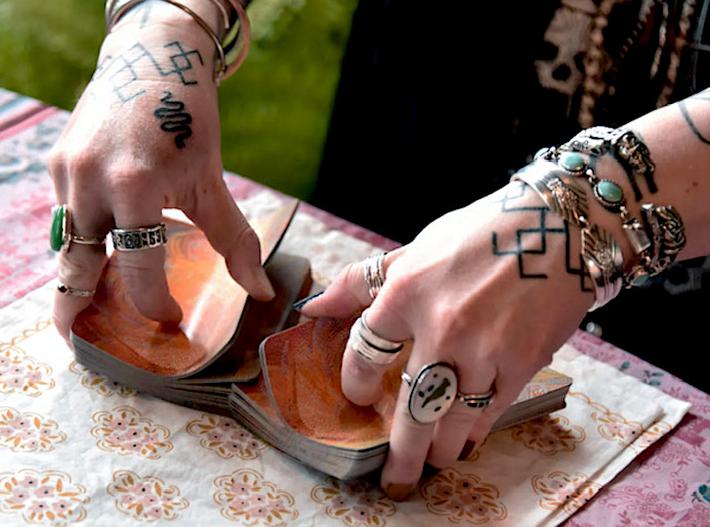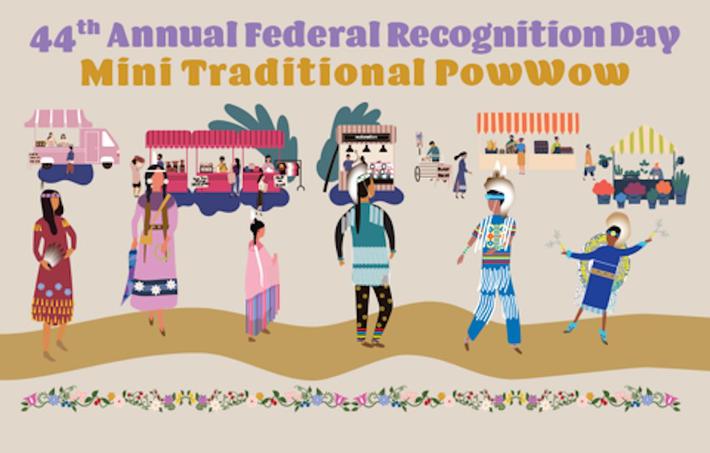
The Wedding of Ernest and Hadley
A northern Michigan romance (while it lasted)
By Al Parker | Feb. 10, 2024
It was the summer of 1920 when young Ernest Hemingway met up with some of his buddies in Boyne City. They set off on a gambling adventure that would determine the fate of the ambitious young writer.
“They were going to a Petoskey casino,” explains Charlevoix Historical Society Museum Curator David Miles. “He had $6 to his name and played roulette until the place closed, probably 2am or so. He won $59.” (That’s $926 in 2024 cash).
“If he had lost, he planned to work at the cement plant—that’s what he later wrote to Grace Quinlan, a Petoskey girl,” adds Miles. “The whole arc of his life would have been different.”
Meanwhile, in Missouri, Elizabeth Hadley Richardson was planning a trip to Chicago.
The Meet Cute
A St. Louis native, Hadley was born in 1891 as the youngest of five children. She was a toddler when she toppled from a second-story window and was bedridden for a year. After the accident, her parents were very protective of their youngest, not allowing her to be involved in most physical activities.
As a teen she was painfully shy, almost reclusive. After a short stint at Bryn Mawr, Hadley returned to St. Louis to live with her mother and sister. In August 1920, her mother died, and soon thereafter Hadley traveled north to Chicago to visit a college friend.
The Illinois trip would change her life.
Hemingway had used his Petoskey roulette winnings to return to Chicago, where a few months later, in October, he met Hadley at a party. Hadley was 28, seven years older than Ernie.
“Hadley noticed a young man with ‘a pair of very red cheeks and very brown eyes straddling the piano bench,’” wrote Hemingway biographer Mary V. Dearborn. “She later told Ernest, ‘You surprised me I remember by seeming to appreciate me without my succeeding, from excitement, in doing anything to be appreciated.’ All evening she was aware of a ‘hulky, bulky, masculine’ presence by her side. Ernest later said he knew that night that he wanted to marry her.”
Hadley remained in Chicago for three weeks. During that time Hadley and Ernie got to know each other.
“Ernest often burst into the room where she was staying, reading aloud from something he had just written,” wrote Dearborn in her 2018 book Ernest Hemingway: A Biography. “Though Hadley didn’t much like Hemingway’s writing at this juncture, it was impossible not to believe in his future as a writer, given that he was so confident of it and so clearly could succeed at anything he put his hand to. ‘Ernest sort of knocked people over – rightfully so,’ Hadley later said. ‘His potential was right out in the open.’”
After less than a year of courtship, a wedding was being planned for September 1921. Hadley didn’t want the wedding to be held in her hometown of St. Louis, and Ernest didn’t want the affair in Chicago.
Naturally, they settled on northern Michigan.
Mixed Reactions
“He came up early, and got the marriage license on Sept. 1, 1921, ” says Miles. “Two copies were made, one for the couple and one for the county building.”
The county copy now is a prized display with its own place of honor on the lower level of the Charlevoix Historical Society Museum, though how it got there is a twist of fate in itself.
Years ago, way before digital records, the state of Michigan decreed that counties destroy old volumes of aged documents. According to Miles, some women working in the county seat came across the Hemingway-Richardson marriage license and put it aside, saving it from destruction.
Miles was eventually let in on the secret when one of the women who had saved the document shared that it hadn't been destroyed. “We can’t get rid of this,” she told Miles, recognizing the historical importance of the license.
“When I first saw it, my jaw just dropped,” says Miles.
The marriage license, neatly framed and displayed with a marriage application and wedding photo, has sparked other emotional responses from museum visitors.
“One time a woman came in and was looking at it,” recalls Miles. “‘I’m a professor of English in Illinois,’ she explained. And then she started shaking. She was so overwhelmed, she burst into tears.”
Another woman had a different reaction.
“That old goat,” she told Miles. “I don’t care if he won the Nobel Prize. My dad was in the Coast Guard in Key West, and I would play in the streets as a young girl. I remember [Hemingway] in filthy boxer shorts that hadn't been washed in days. We could smell his BO and liquor on his breath. That’s my memory of Ernest Hemingway.”
A Magical Day
Former Charlevoix resident and noted local historian William “Bill” Ohle was a boy when he attended the nuptials of Hadley and Ernest.
“A few small boys, Kenny and Stub VanHoesen, Bucky Harris and his brother Chuck, Howard Crouterfield, and I, waited outside the building until just before the wedding party entered, then we slipped in to sit beside our respective parents,” he wrote in his 1989 book How It Was in Horton Bay. “In spite of all the complications, the wedding went off in fine style. It was a gracious event, a simple ceremony in rustic surroundings.”
In her 1973 book, Hadley: The First Mrs. Hemingway, author Alice Hunt Sokoloff had the full cooperation of her subject and friend, who not only made available her unpublished letters to Hemingway but also devoted long hours to recording her recollections on tape.
“The day of the wedding was perfect,” wrote Sokoloff. “The little church was decorated with wildflowers which Ruth and Kate had arranged. Ernest went for a swim before dressing for the ceremony and so did Hadley, but it took longer for her thick hair to dry and she was late at the church. Her creamy lace dress was as becoming as she hoped it would be, and she radiated happiness as she came down the aisle on George Breaker’s arm to the strains of the wedding march played by an organist imported from Petoskey.”
Ernest’s parents—Dr. and Mrs. Hemingway—were there along with two of their daughters, Ursula and Carol, and their six-year-old son Leicester. After the ceremony, the groom turned sullen.
“He was irritated at all the picture taking afterward, but they all had a good chicken dinner later at Liz Dilworth’s Pinehurst Cottage,” wrote Sokoloff. “It was dark before Hadley and Ernest managed to get away. A friend of Ernest’s drove them over to Walloon Lake where they climbed into a rowboat and rowed across to Windemere Cottage.”
Ohle knew even more about those last hours of the wedding day. “Following the meal, John Kotensky appeared and drove the newlyweds to the Walloon Lake end of Sumner Road, four miles away, in his Model T touring car. It carried a small ‘Just Married’ sign in back and a few tin cans and old shoes dragged behind until the string broke. These had probably been placed by Vollie Fox, a strong believer in tradition.”
A Doomed Romance
Unfortunately for the newlyweds, those old shoes didn’t bring them much luck.
Hadley found it difficult to keep house in the Hemingway cottage. She couldn’t find the things she needed—pots, pans, kettles, salt or pepper. As the fall wore on, both the bride and groom struggled with colds. The weather turned cool, and Ernest took Hadley into Petoskey and introduced her to several girls he had known in the past. (Real smart move there, Ernie.)
Hadley was not impressed at all and thought it was her new husband’s form of braggadocio. He tried to appease her, saying that he thought it would raise him in her estimation to show her these girls “who cannot live without me.” Unsurprisingly, Hadley found Ernie’s explanation less than satisfactory.
After the two-week honeymoon, the newlyweds went back to Chicago, moving into a third floor apartment that Ernest had rented at 1219 North Dearborn Street. From there, the couple moved to Paris and later welcomed their son in 1923. But their marriage crumbled in 1926 as Hemingway was writing and rewriting The Sun Also Rises and started an affair with one of Hadley’s closest friends, Pauline Pfeiffer, an independently wealthy writer for the Paris edition of Vogue. Pfeiffer eventually became Hemingway’s second wife.
That wasn’t just the end of Ernest and Hadley, but also of Hemingway’s travels Up North.
According to Ohle, “Ernest never again visited Horton Bay, but it is remarkable how many people ranging from Lost Generation types to professors of English, come here to see for themselves how northern Michigan magic influenced Hemingway, hoping it will rub off on them too.”
Trending

Meaningful, Practical, Magical
Sarah Snider, owner of Poetess and Stranger, has poured nearly three decades of experience into the creation of her Petosk... Read More >>
Restoring Sleeping Bear Inn
It won’t be long before Glen Haven visitors will be able to experience waking up in the oldest hotel in the National... Read More >>
GTB Celebrating 44 Years
The Grand Traverse Band of Ottawa and Chippewa Indians will host their 44th Annual Federal Recognition Day – Mini Tr... Read More >>


